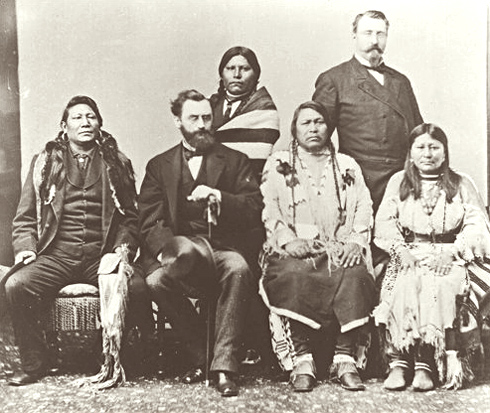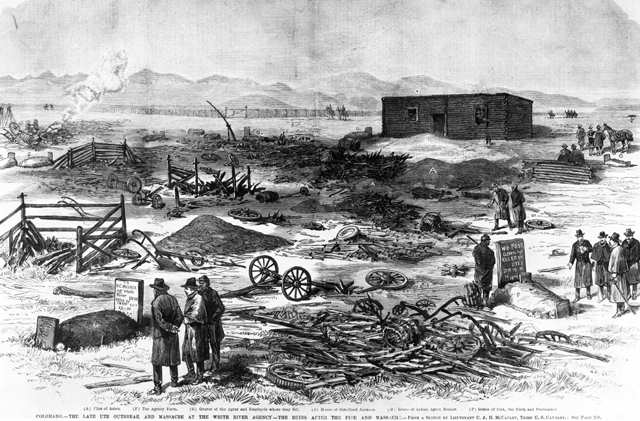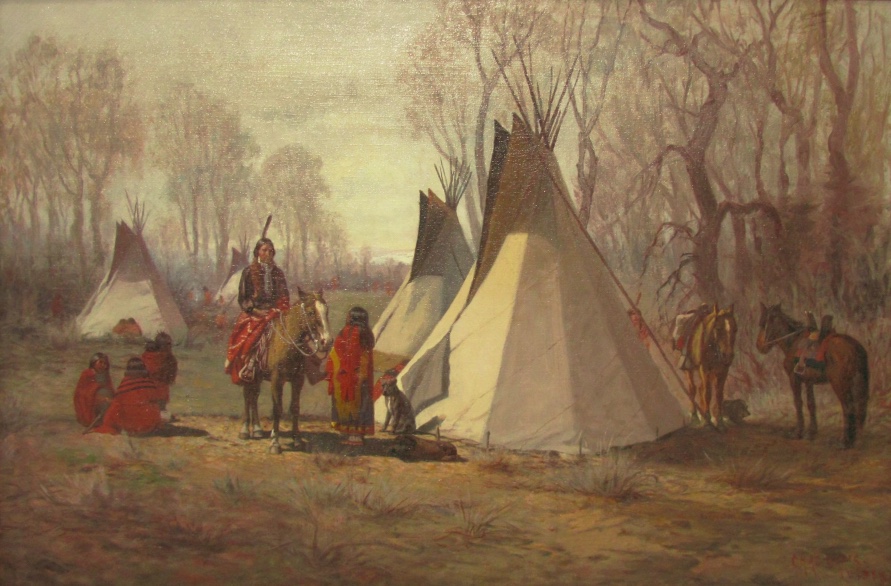|
Chipeta
Chipeta or White Singing Bird (1843 or 1844 – August 1924) was a Native American woman, and the second wife of Chief Ouray of the Uncompahgre Ute tribe. Born a Kiowa Apache, she was raised by the Utes in what is now Conejos, Colorado. An advisor and confidant of her husband, Chipeta continued as a leader of her people after his death in 1880. She was an Indian rights advocate and diplomat. She used diplomacy to try to achieve peace with the white settlers in Colorado and in 1985, Chipeta was inducted into Colorado Women's Hall of Fame. Background ''Chipeta'', "White Singing Bird" in the Ute ( Shoshonean) language, was born into the Kiowa Apache tribe in about 1843 or 1844. She was adopted and raised by the Uncompahgre Utes of present-day Colorado. She learned their traditional ways and became a skilled artisan in beadwork and tanning. In 1859, she married Chief Ouray of the Uncompahgres, becoming his second wife. She came to act as his advisor and confidant, often sitting ... [...More Info...] [...Related Items...] OR: [Wikipedia] [Google] [Baidu] |
Chief Ouray
Ouray (, 1833 – August 24, 1880) was a Native American chief of the Tabeguache (Uncompahgre) band of the Ute tribe, then located in western Colorado. Because of his leadership ability, Ouray was acknowledged by the United States government as a chief of the Ute and he traveled to Washington, D.C. to negotiate for the welfare of the Utes. Raised in the culturally diverse town of Taos, Ouray learned to speak many languages that helped him in the negotiations, which were complicated by the manipulation of his grief over his five-year-old son abducted during attack by the Sioux and trantee. Ouray met with Presidents Lincoln, Grant, and Hayes and was called the man of peace because he sought to make treaties with settlers and the government. Following the Meeker Massacre (White River War) of 1879, he traveled in 1880 to Washington, D.C. He tried to secure a treaty for the Uncompahgre Ute, who wanted to stay in Colorado; but, the following year, the United States forced the Uncompah ... [...More Info...] [...Related Items...] OR: [Wikipedia] [Google] [Baidu] |
Colorado Women's Hall Of Fame
The Colorado Women's Hall of Fame is a non-profit, volunteer organization that recognizes women who have contributed to the history of the U.S. state of Colorado. As of 2020, 170 women have been inducted. History There was a short-lived recognition program established in Colorado in 1965 to honor the contributions of women to the state, known as the Colorado Women of Achievement awards. Each year, three honorees from throughout the state who had distinguished themselves in their profession or avocation were recognized at an annual banquet held in Denver, given a cash award, and received a pin with the emblem of the program, which was sponsored by the Columbia Savings and Loan Association. The 1965 inductees, honored in 1966, included Verona Burkhard Verona Burkhard (1910–2004) was an American artist, known for her murals painted for the U.S. Treasury Department. She participated in four public projects including three United States post office murals and five murals completed ... [...More Info...] [...Related Items...] OR: [Wikipedia] [Google] [Baidu] |
Josephine Meeker
Josephine Meeker (January 28, 1857 – December 20, 1882), was a teacher and physician at the White River Indian Agency in Colorado Territory, where her father Nathan Meeker was the United States (US) agent. On September 29, 1879, he and 10 of his male employees were killed in a Ute attack, in what became known as the Meeker Massacre. Josephine, her mother Arvilla Meeker, and Mrs. Shadruck Price and her two children were taken captive and held hostage by the Ute tribe for 23 days. Following the rescue of the hostages, Meeker recounted her experiences at a public hearing. General Charles Adams, of the Colorado Militia that arranged the captives' release, conducted an official investigation of the incident. Josephine Meeker's testimony provides keen insight into the experiences a white woman underwent as an Indian captive. She was the last celebrated white captive of Native Americans.Brown, p.11 Working for some time in Washington, DC, and then for Senator Henry Moore Teller i ... [...More Info...] [...Related Items...] OR: [Wikipedia] [Google] [Baidu] |
Ute Tribe
Ute () are the Indigenous people of the Ute tribe and culture among the Indigenous peoples of the Great Basin. They had lived in sovereignty in the regions of present-day Utah and Colorado in the Southwestern United States for many centuries until European settlers conquered their lands. The state of Utah is named after the Ute tribe. In addition to their ancestral lands within Colorado and Utah, their historic hunting grounds extended into current-day Wyoming, Oklahoma, Arizona, and New Mexico. The tribe also had sacred grounds outside their home domain that were visited seasonally. There were 12 historic bands of Utes. Although they generally operated in family groups for hunting and gathering, the communities came together for ceremonies and trading. Many Ute bands were culturally influenced by neighboring Native American tribes and Puebloans, whom they traded with regularly. After contact with early European colonists, such as the Spanish, the Ute formed trading relati ... [...More Info...] [...Related Items...] OR: [Wikipedia] [Google] [Baidu] |
Milk Creek Battle
Meeker Massacre, or Meeker Incident, White River War, Ute War, or the Ute Campaign), took place on September 29, 1879 in Colorado. Members of a band of Ute Indians ( Native Americans) attacked the Indian agency on their reservation, killing the Indian agent Nathan Meeker and his 10 male employees and taking five women and children as hostages. Meeker had been attempting to convert the Utes to Christianity, to make them farmers, and to prevent them from following their nomadic culture. On the same day as the massacre, United States Army forces were en route to the Agency from Fort Steele in Wyoming due to threats against Meeker. The Utes attacked U.S. troops led by Major Thomas T. Thornburgh at Milk Creek, north of present day Meeker, Colorado. They killed the major and 13 troops. Relief troops were called in and the Utes dispersed. The conflict resulted in the Utes losing most of the lands granted to them by treaty in Colorado, the forced removal of the White River Utes a ... [...More Info...] [...Related Items...] OR: [Wikipedia] [Google] [Baidu] |
Meeker Massacre
Meeker Massacre, or Meeker Incident, White River War, Ute War, or the Ute Campaign), took place on September 29, 1879 in Colorado. Members of a band of Ute Indians ( Native Americans) attacked the Indian agency on their reservation, killing the Indian agent Nathan Meeker and his 10 male employees and taking five women and children as hostages. Meeker had been attempting to convert the Utes to Christianity, to make them farmers, and to prevent them from following their nomadic culture. On the same day as the massacre, United States Army forces were en route to the Agency from Fort Steele in Wyoming due to threats against Meeker. The Utes attacked U.S. troops led by Major Thomas T. Thornburgh at Milk Creek, north of present day Meeker, Colorado. They killed the major and 13 troops. Relief troops were called in and the Utes dispersed. The conflict resulted in the Utes losing most of the lands granted to them by treaty in Colorado, the forced removal of the White River Utes ... [...More Info...] [...Related Items...] OR: [Wikipedia] [Google] [Baidu] |
White River War
Meeker Massacre, or Meeker Incident, White River War, Ute War, or the Ute Campaign), took place on September 29, 1879 in Colorado. Members of a band of Ute Indians ( Native Americans) attacked the Indian agency on their reservation, killing the Indian agent Nathan Meeker and his 10 male employees and taking five women and children as hostages. Meeker had been attempting to convert the Utes to Christianity, to make them farmers, and to prevent them from following their nomadic culture. On the same day as the massacre, United States Army forces were en route to the Agency from Fort Steele in Wyoming due to threats against Meeker. The Utes attacked U.S. troops led by Major Thomas T. Thornburgh at Milk Creek, north of present day Meeker, Colorado. They killed the major and 13 troops. Relief troops were called in and the Utes dispersed. The conflict resulted in the Utes losing most of the lands granted to them by treaty in Colorado, the forced removal of the White River Utes ... [...More Info...] [...Related Items...] OR: [Wikipedia] [Google] [Baidu] |
Charles Adams (Colorado Indian Agent)
Charles Adams, born Karl Adam Schwanbeck (December 19, 1845 – August 19, 1895), was a United States Army officer, US Indian agent, diplomat and businessman. In 1879 he secured the release of five hostages taken captive by the White River Utes after the Meeker Massacre, and held an official inquiry into their treatment. In 1880 he was appointed minister to Bolivia, where he served for two years. Returning to Colorado, he became involved in mining and water development. Early life and education Born in Anklam, Pomerania, Germany in 1845, Charles was the son of cabinetmaker Karl Heinrich and Maria J. Mackman Schwanbeck. His family immigrated to the United States after the Revolutions of 1848 in Germany. Career Schwanbeck fought as a young man in the late years of the American Civil War. After the war he migrated to the Colorado Territory. About 1870, he was appointed a brigadier general of the Colorado Militia, by when he had changed his surname to Adams. In addition, he w ... [...More Info...] [...Related Items...] OR: [Wikipedia] [Google] [Baidu] |
Carl Schurz
Carl Schurz (; March 2, 1829 – May 14, 1906) was a German revolutionary and an American statesman, journalist, and reformer. He immigrated to the United States after the German revolutions of 1848–1849 and became a prominent member of the new Republican Party. After serving as a Union general in the American Civil War, he helped found the short-lived Liberal Republican Party and became a prominent advocate of civil service reform. Schurz represented Missouri in the United States Senate and was the 13th United States Secretary of the Interior. Born in the Kingdom of Prussia's Rhine Province, Schurz fought for democratic reforms in the German revolutions of 1848–1849 as a member of the academic fraternity association Deutsche Burschenschaft. After Prussia suppressed the revolution Schurz fled to France. When police forced him to leave France he migrated to London. Like many other "Forty-Eighters", he then immigrated to the United States, settling in Watertown, Wisconsin, ... [...More Info...] [...Related Items...] OR: [Wikipedia] [Google] [Baidu] |
Uncompahgre Ute
The Uncompahgre Ute () or ꞌAkaꞌ-páa-gharʉrʉ Núuchi (also: Ahkawa Pahgaha Nooch) is a band of the Ute, a Native American tribe located in the US states of Colorado and Utah. In the Ute language, means "rocks that make water red." The band was formerly called the Tabeguache. Tabeguache The Tabeguache (( Ute language: , ,, and ), or “People of Sun Mountain,” was the largest of the ten nomadic bands of the Ute and part of the Northern Ute People. They lived in river valleys of the Gunnison River and Uncompahgre River between the Parianuche to the north and the Weeminuche to the south. They traveled seasonally. Like other Ute, they were hunters who followed and hunted buffalo, deer, and elk. They moved their camp about every month, and created a link to Mother Earth at each camp by constructing a medicine wheel at the center of camp. The Tabeguache believed that the Pikes Peak region is their home. Their name for the mountain is , meaning "sun mountain." Living a no ... [...More Info...] [...Related Items...] OR: [Wikipedia] [Google] [Baidu] |
Fort Steele
Fort Steele is a heritage site in the East Kootenay region of southeastern British Columbia. This visitor attraction lies on the east shore of the Kootenay River between the mouths of the St. Mary River and Wild Horse River. The locality, on the merged section of highways 93 and 95, is by road about northeast of Cranbrook and southeast of Golden. Ferry and bridges In 1864, John Galbraith arrived to prospect for gold on Wild Horse Creek but soon switched to more lucrative business opportunities. Later that year, he was granted a charter for a toll ferry across the Kootenay River, commencing in the new year. John also established a general store, which with the ferry, greatly profited from the early goldfield traffic to the Fisherville mining camp. He sent for two of his brothers and his two sisters with their families. Marrying Sarah Larue, John, and his brother Robert Galbraith (known as R.L.T.), purchased land at Joseph's Prairie (later called Cranbrook), where John oper ... [...More Info...] [...Related Items...] OR: [Wikipedia] [Google] [Baidu] |
Alamosa, Colorado
Alamosa is a home rule municipality and the county seat of Alamosa County, Colorado, United States. The city population was 9,806 at the 2020 United States Census. The city is the commercial center of the San Luis Valley in south-central Colorado, and is the home of Adams State University. History Alamosa was established in May 1878 by the Denver and Rio Grande Railroad and quickly became an important rail center. Alamosa was the terminus of the D&RG until 1881, when the line was extended to Monte Vista. The railroad had an extensive construction, repair and shipping facility in Alamosa for many years and headquartered its remaining narrow gauge service here with trackage reaching many points throughout southwest Colorado and northern New Mexico. Alamosa is now a notable tourist town with many nearby attractions, including the Great Sand Dunes National Park and Preserve, Colorado Gators Reptile Park and the Rio Grande Scenic Railroad. The town hosts "Summer Fest on the Rio" whic ... [...More Info...] [...Related Items...] OR: [Wikipedia] [Google] [Baidu] |








